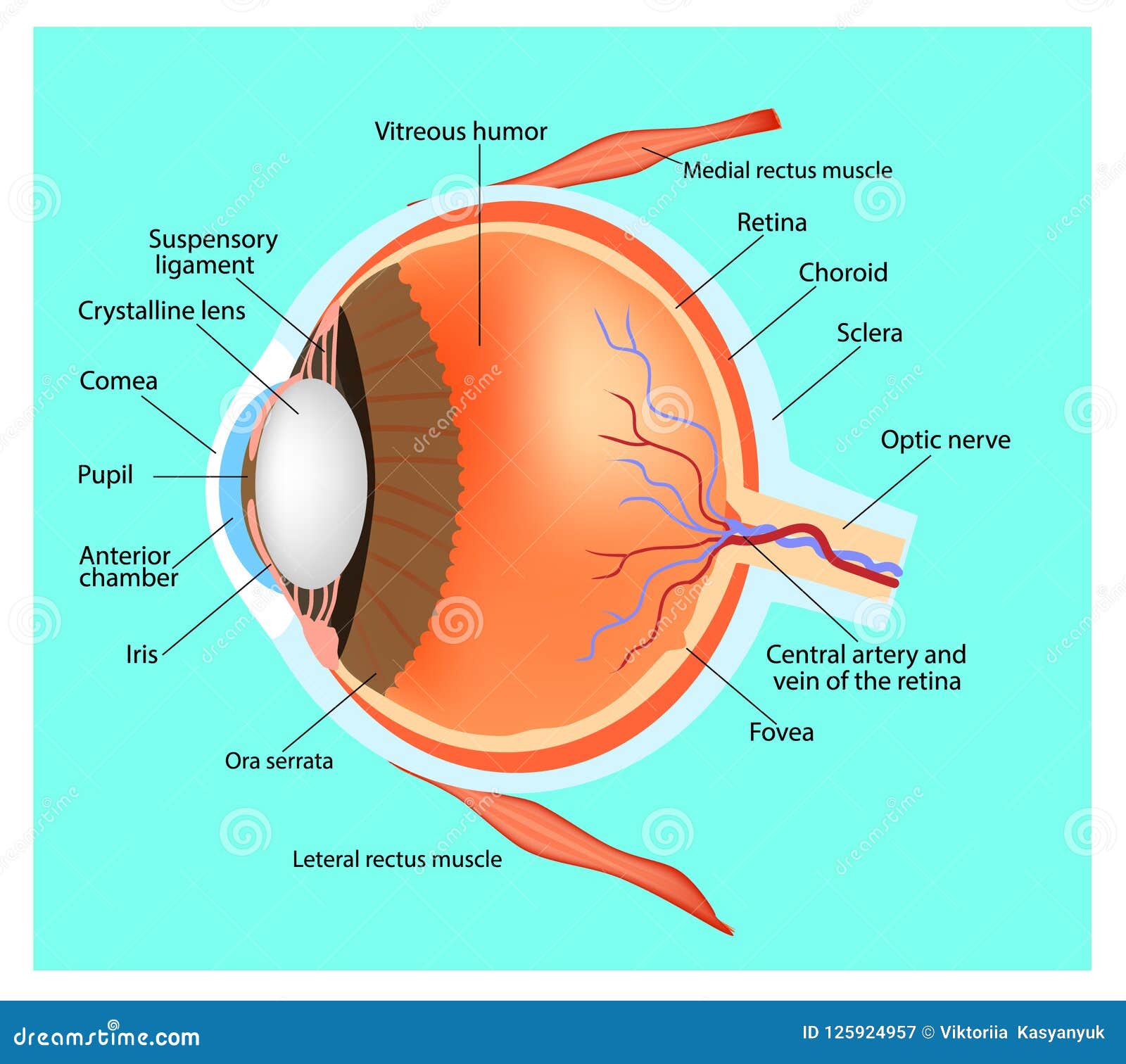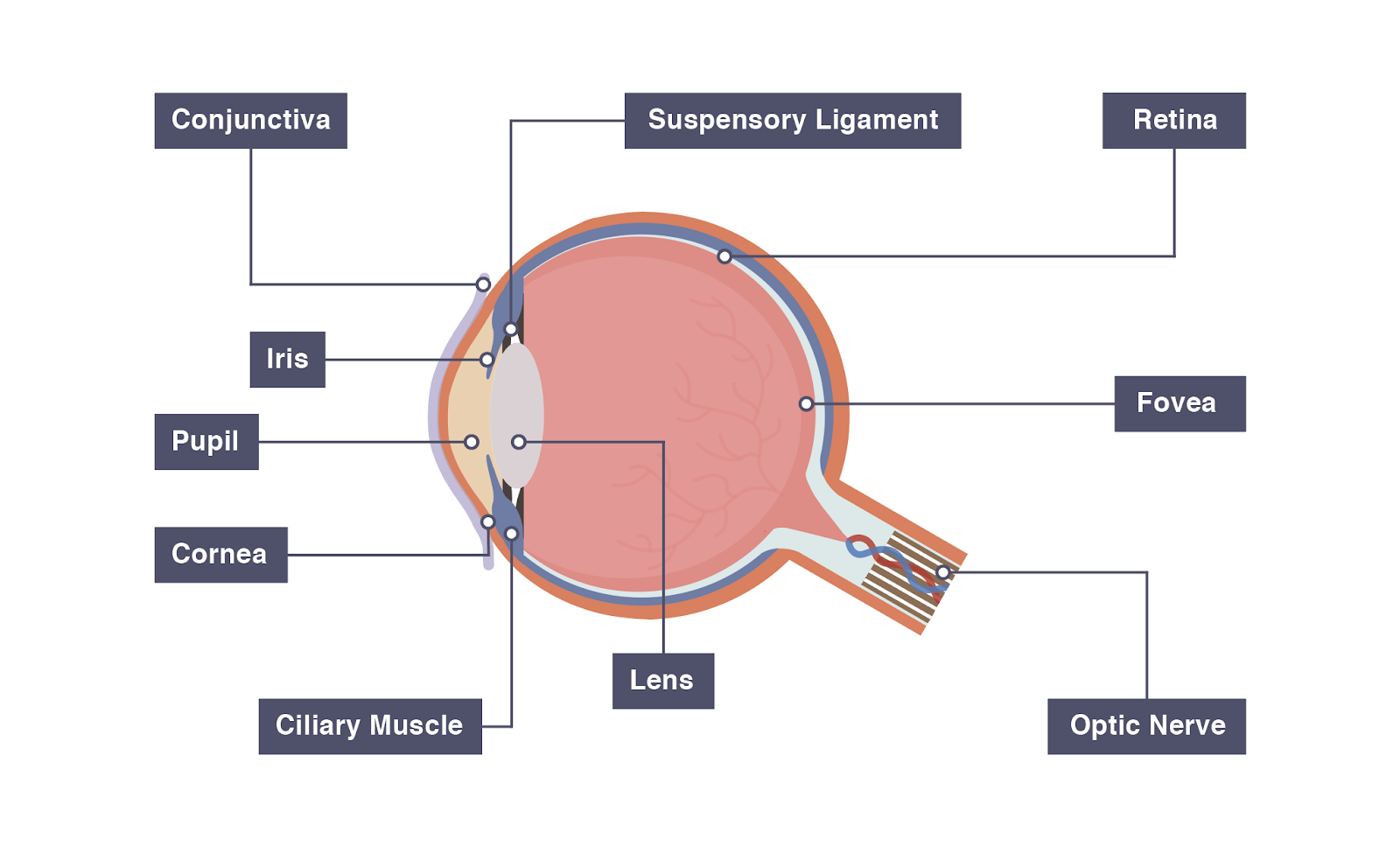
This abundant blood supply is implicated in uveitis, as inflammatory mediators enter the eye through this vascular network. The uvea of the eye is a crucial mediator of nutrition and gas exchange, as blood vessels course through the ciliary body and iris, while the choriocapillaris in the posterior eye help support the retina. This is the same iris with the hole in between, all right Lets look at the other parts. At the end of the visual process, as rays of light bend through the cornea and lens, photon energy is converted to neurochemical action potentials by cells of the retina, which then send these impulses to the brain, via the optic nerve. So, now we are only seeing a section of the iris. The remaining one-third of refraction is performed by the lens, which is functionally adjustable through the action of the zonular fibers and ciliary muscles. The cornea serves a protective role and is responsible for two-thirds of the refractive properties of the eye. Internal parts of the eye have primarily structural and visual functions. Eyelashes are finely sensitive to touch and warn the eye of possible debris and particles that may cause injury. Human Eye provides vision, helps perceive and differentiate colors, and acts as the biological clock of the human body.

The eyelid prevents foreign bodies from entering the inner eye and helps refresh and distribute the tear film by blinking.

The essential role of the external eye structures is to protect the delicate tissue of the internal eye.

The layers of the eye perform distinct functions which coalesce to create a unified, perceptual experience.


 0 kommentar(er)
0 kommentar(er)
